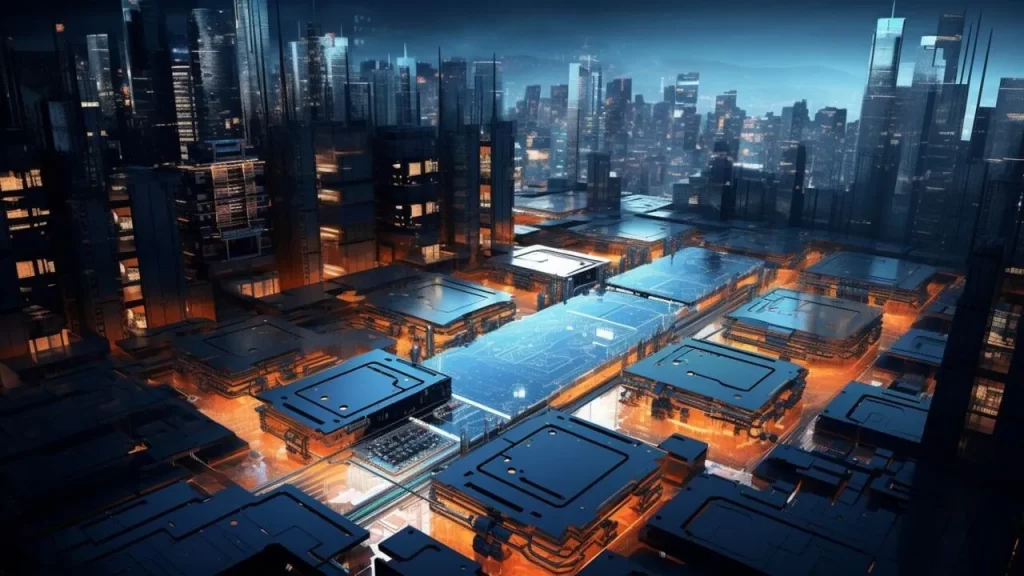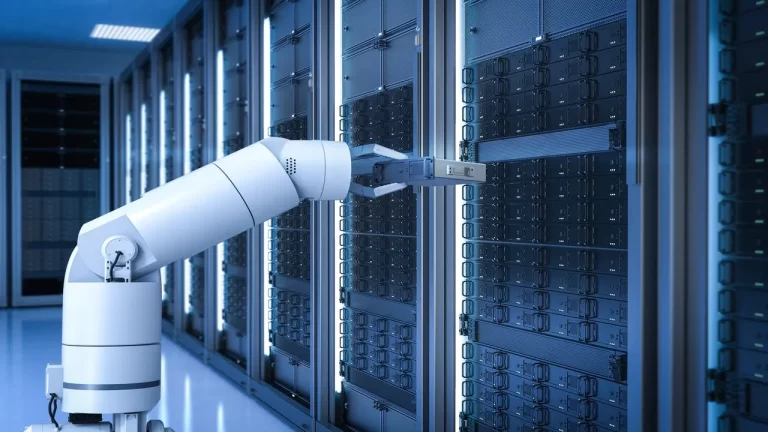The data center industry is changing fast because many people are using large-scale & edge computing services. These changes are changing how digital networks are expected to help the market to reach a value of $613 billion by 2033. This growth highlights how important data centers are for addressing the increasing needs of cloud computing, artificial intelligence, & the Internet of Things.
Hyperscale Computing
Hyperscale data centers are facilities that can efficiently cover large amounts of data. They are important for big tech companies including Amazon Web Services, Microsoft Azure, & Google Cloud. These data centers are developed easily to increase their resources as the need for data processing & storage increases. A report from JLL predicts that the hyperscale market will increase by 20% from 2021 to 2026, & the number of hyperscale sites is expected to exceed 1,000 by the end of 2024, up from about 500 sites five years ago.
This growth is supported by major investments from industry leaders. For example, Equinix has announced a $15 billion partnership to improve hyperscale data centers in the U.S., showing the increasing need for AI computing power. Amazon plans to invest another $10 billion in its data center operations in Ohio, bringing its total investment in the state to over $23 billion by 2030.
Edge Computing
hyperscale data centers handle huge amounts of data, edge computing is targeted at processing data close to where it is generated. This method helps reduce delays and improves real-time data processing, which is important for things like self-driving cars, smart cities, & Internet of Things devices. Edge data centers are usually smaller & located in specific areas to give local computing power that works alongside hyperscale facilities.
The connection between hyperscale and edge computing is clear in their overall market impact. A report from USDC Technology Media shows that together, hyperscale and edge data centers make up 79% of the total market demand, demonstrating their strong presence in the data center industry.
Artificial Intelligence: Accelerating Data Center Demand
The development of AI technologies has greatly increased the need for a strong data center network. AI applications need lots of computing power & storage, which increases the need for hyperscale & edge data centers both. Bain & Company estimates that the market for data centers & AI-related hardware & software will increase by 40% to 55% each year, reaching $1.4 trillion by 2027.
Sustainability and Energy Efficiency: A Dual Challenge
data centers grow to address the increasing digital needs, & worries about their effect on the environment have become more important. These facilities use lots of energy, which has resulted in a focus on sustainability & energy saving. New technologies, including liquid cooling systems, the use of renewable energy, & better power management, are being introduced to help minimize energy use while still delivering high performance.
on the other side, finding a balance between increasing digital networks & protecting the environment is a difficult issue. The increasing energy & water needs of data centers could increase global emissions & keep fossil fuel prices high. For example, Spain has seen a big increase in data center investments exceeding €34.1 billion in just six months, with projects from big companies including Amazon & Microsoft. This fast growth increases worries about sustainability, as data centers could contribute to as much as 4% of global emissions by 2030.
Regional Developments: North America and Asia-Pacific at the Forefront
In terms of regions, North America is still the leader in the hyperscale data center market, thanks to its strong technological infrastructure and the presence of major cloud service providers. The U.S. made up 52% of all data center transactions from 2018 to 2022, showing a strong interest from investors. In 2022, the U.S. had 1,633 megawatts (MW) of data center capacity used across six main markets, with another 1,939 MW currently being built.
The Asia-Pacific area is experiencing fast development because of the increasing use of cloud services & a widespread digital transformation. Countries that include China, Japan, & India are making important investments in digital networks to keep up with the increasing need for data storage & processing. The development of IoT devices & increased data traffic, especially from successful sectors including e-commerce, manufacturing, & fintech, highlight the region’s growing importance.
Challenges Ahead: Talent Shortages and Regulatory Pressures
In light of the positive progress in the data center industry, there are important challenges, especially when it comes to finding & keeping skilled workers. Around 53% of data center operators worldwide report having trouble finding qualified candidates, & 42% face issues with maintaining staff. This shortage of talent could hinder the industry’s ability to address increasing needs.
there are increasing regulatory pressures as governments & organizations work to balance digital growth with environmental sustainability. For example, Singapore has introduced a Data Centre Moratorium to set standards & minimize the industry’s environmental effects. Operators who take proactive steps to face these challenges by accepting sustainable practices & investing in workforce development are likely to have a competitive advantage.
Conclusion:
The combination of hyperscale & edge computing is shaping the future of the data center industry. As these two methods work together, they are advancing innovation & addressing the increasing need for data processing & storage. progress in technology, a focus on sustainability, & the need for skilled talent, the data center environment is set for important transformation. This dynamic environment presents both challenges & opportunities, clearing the path for a more efficient & responsive digital network in the years to come.






